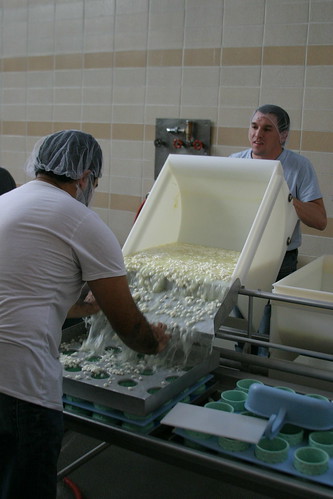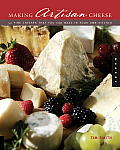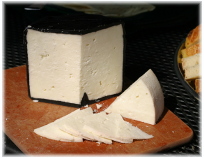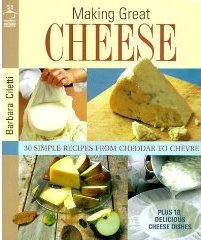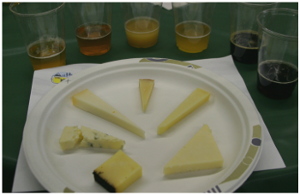
I spent most of my day Saturday at
The Wedge, here in Portland, Oregon. This festival of local cheese is one of the reasons I am glad I live here.
I tasted a lot of cheese, and learned that the pacific northwest is filled with cheesemakers who make really good products. I attended all three seminars offered: Pairing cheese with beer, constructing a cheese plate and pairing cheese with spirits. Here are some of the highlights.
I really fell in love with the washed rind cheeses offered in the seminars. These are the type cheeses known for their pungent smell, reminiscent of smelly feet. In fact the bacteria that gives them this smell,
brevibacterium linens (or
b-
linens), is found in human perspiration. This may be off-putting to some, but for the person who loves a strong cheese, the flavors generated by the bacteria overcome any reservations against eating the product of a bacteria that also grows in some unsavory environments. I have a large packet of b-linens in my freezer waiting for my first attempt at a muenster or limburger style cheese.
In this style I tasted the Hillis Peak from
Pholia Farm, and Caldwell Crik from
Estrella Family Creamery. Both were creamy and full of washed rind flavor. Hillis Peak was part of the cheese and beer pairing seminar, and I thought it went especially well with a Belgian styled ale called "Four" from
Upright Brewing. The clove flavors in the beer made a wonderful combination with the cheese. The Caldwell Crik was part of the seminar concentrating on building a cheese board. Here I was surprised that matching this cheese with a honey from Ridge Farms made a wonderful combination.
Pairing beer with cheese, instead of the more traditional wine, worked quite well. As was pointed out, wine can be acidic, and can compete with the creamy texture in some cheese. The flavors in craft brews can pair better in some cases.
The final seminar matched cheese and spirits, and it was purportedly the first of its kind. Good pairings seemed to occur less often in this seminar. This may be due to the fact locally made spirits were used, and no whiskey were present (though some local whiskeys do exist). Whiskey may have been a good pairing with some of the cheeses.
One pairing I thought was perfect was
Rogue Hazelnut Spiced Rum with Hazelnut Torte from Rivers Edge creamery (Hazelnuts, or filberts, are Oregon's state nut).
There was a extremely odd spirit from
Clear Creek Distillery: Eau de Vie of Douglas Fir. This spirit is flavored with the green tips of new growth that form on a Douglas Fir in the spring. It has a green color and the taste was very unusual. I enjoyed its unique flavor, but I am afraid it showed how some spirit and cheese combinations do not pair well. I thought it was ok with Mopsy's Best from Black Sheep Creamery, but few others.
In the final pairing Clear Creek Eau de Vie Pear Brandy was paired with
Rogue River Blue. This is the cheese that
won best of show in the American Cheese Society competition this year. The cheese is wrapped in grape leaves soaked in the same brandy that it was paired with in this seminar. I had skipped ahead unaware of the natural combination and decided for myself that the pairing was good but not great. When the four judges leading the seminar tasted this combination, they raved about how this was the best pairing of the seminar. Could I have been so wrong, or perhaps the judges were predisposed to believe this pairing could not be better. Perhaps a little of both.
After all of this tasting, I feel well armed to impress the next guests to whom I serve a cheese board.






